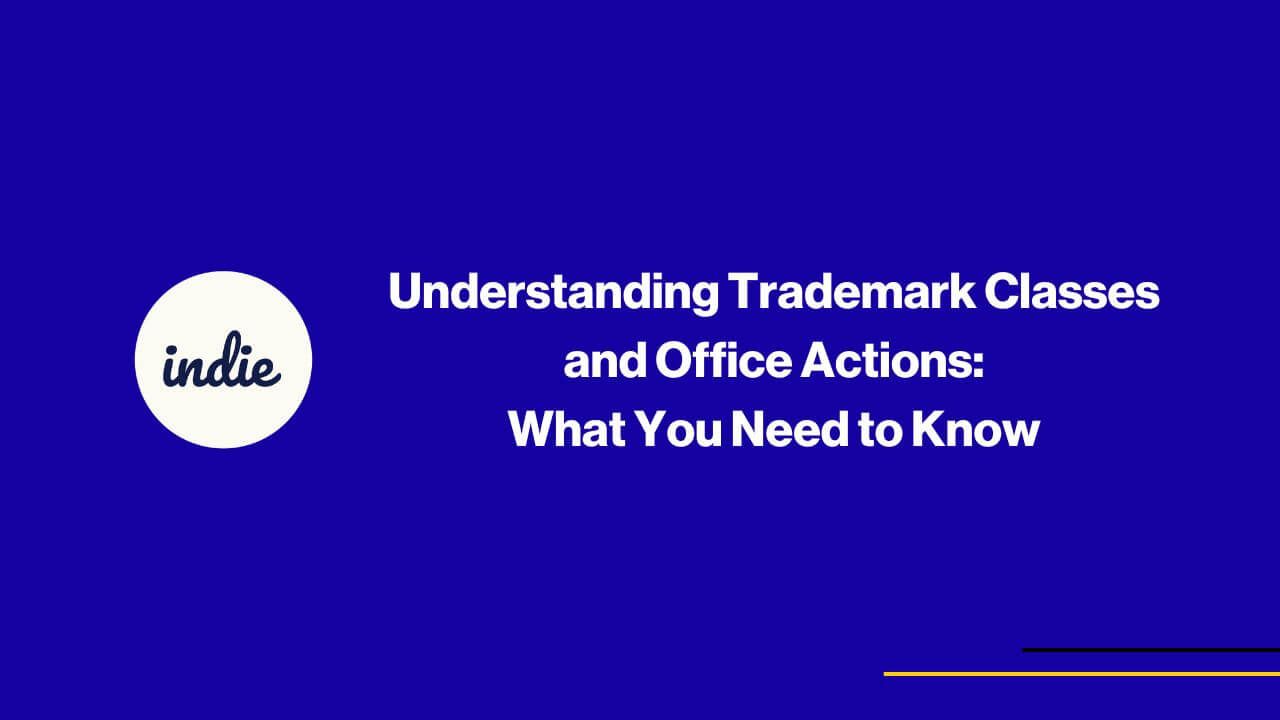When you file a trademark application, it’s common to receive something called an “office action” from the USPTO. In some cases, the examining attorney might suggest that you add additional classes to your application based on the description you provided. This can lead to confusion for business owners—do you really need to add these extra classes? What are the pros and cons of doing so?
In this post, we’ll break down the key points so you can make informed decisions about your trademark application.
What Are Trademark Classes?
Trademark classes are categories used by the USPTO to organize goods and services. There are 45 different classes, and each one covers a different range of products or services. For example, clothing is in Class 25, while downloadable educational resources is in Class 9.
When you file your trademark application, you need to specify the class (or classes) under which your business operates. Sometimes, the examining attorney might think your business description fits into additional classes and will suggest you add them.
Do You Need to Add Additional Classes?
When you receive an office action suggesting additional classes, you might wonder if it’s necessary to add them. Here are some things to consider:
- Is this class a significant part of your business? If the additional class represents a product or service that you already offer or plan to offer in the near future, it might make sense to add it to your trademark application.
- Is this class likely to be part of your future business plans? If your business might expand into this area, registering your trademark in that class now could save you from having to file a new application later.
- Do you need protection in this class to sell under it? The short answer is no. You don’t need a trademark in a particular class in order to sell a product or service under that class. Trademark classes are more about legal protection and less about the ability to offer something for sale.
Pros and Cons of Adding Classes
There are advantages and disadvantages to adding more classes to your trademark application.
Pros:
- Broader protection. If you register in multiple classes, your trademark will be protected across a wider range of goods and services.
- Future-proofing. If you plan to expand your business into other areas, it may be easier to add those classes now rather than filing a new application later.
Cons:
- Higher costs. Adding more classes increases the filing fees, as each additional class costs extra.
- Unnecessary complexity. If the additional class isn’t relevant to your core business, adding it might not provide much value and could make enforcing your trademark more complex down the road.
How Adding or Dropping Classes Relates to Likelihood of Confusion Refusals
One of the most common reasons for trademark refusals is a “likelihood of confusion” with an existing mark. Many clients assume that adding or dropping trademark classes will automatically avoid this problem, but that’s not necessarily the case.
Likelihood of confusion is determined by whether your mark is similar to an existing one and whether your goods or services are related enough that consumers might think they come from the same source. In other words, the key factor isn’t the class alone but how the marks and offerings are perceived in the marketplace.
It’s important to note that the analysis for likelihood of confusion is far more complex than simply comparing the trademark classes.
- Just because two businesses operate in the same class doesn’t automatically mean there will be confusion. For example, two podcasts in the same class—one about business growth and the other about politics—might not confuse consumers due to their different content and audiences.
- Two trademarks in different classes can still result in a likelihood of confusion. For instance, a clothing brand and a fitness app might be in different classes, but if both use similar names and target similar customers, confusion could occur.
Ultimately, trademark examiners will look at the overall context—how the marks look, sound, and feel, as well as how closely related the products or services are.
How We Can Help You Decide
At Sleight Law, we understand how confusing these decisions can be. We can’t tell you exactly what to do until we learn more about your business. Some questions we’ll ask include:
- Are the additional classes relevant to your current or future business plans?
- Do you need broader trademark protection to enforce your rights?
- How important is it to protect your brand in the suggested class?
We typically don’t recommend adding additional classes unless you have a significant stake in that part of the market. It’s all about protecting the parts of your business that matter most.
Final Thoughts: Protect What Matters
Remember, you don’t need a trademark in a class just to sell in that category. And while broader protection might sound appealing, it’s not always necessary. What matters most is ensuring that your trademark covers the core of your business and gives you the best protection moving forward.
If you’re unsure about what to do next, our team is here to help. We’ll guide you through the process, ask the right questions, and give you the advice you need to protect your brand.

